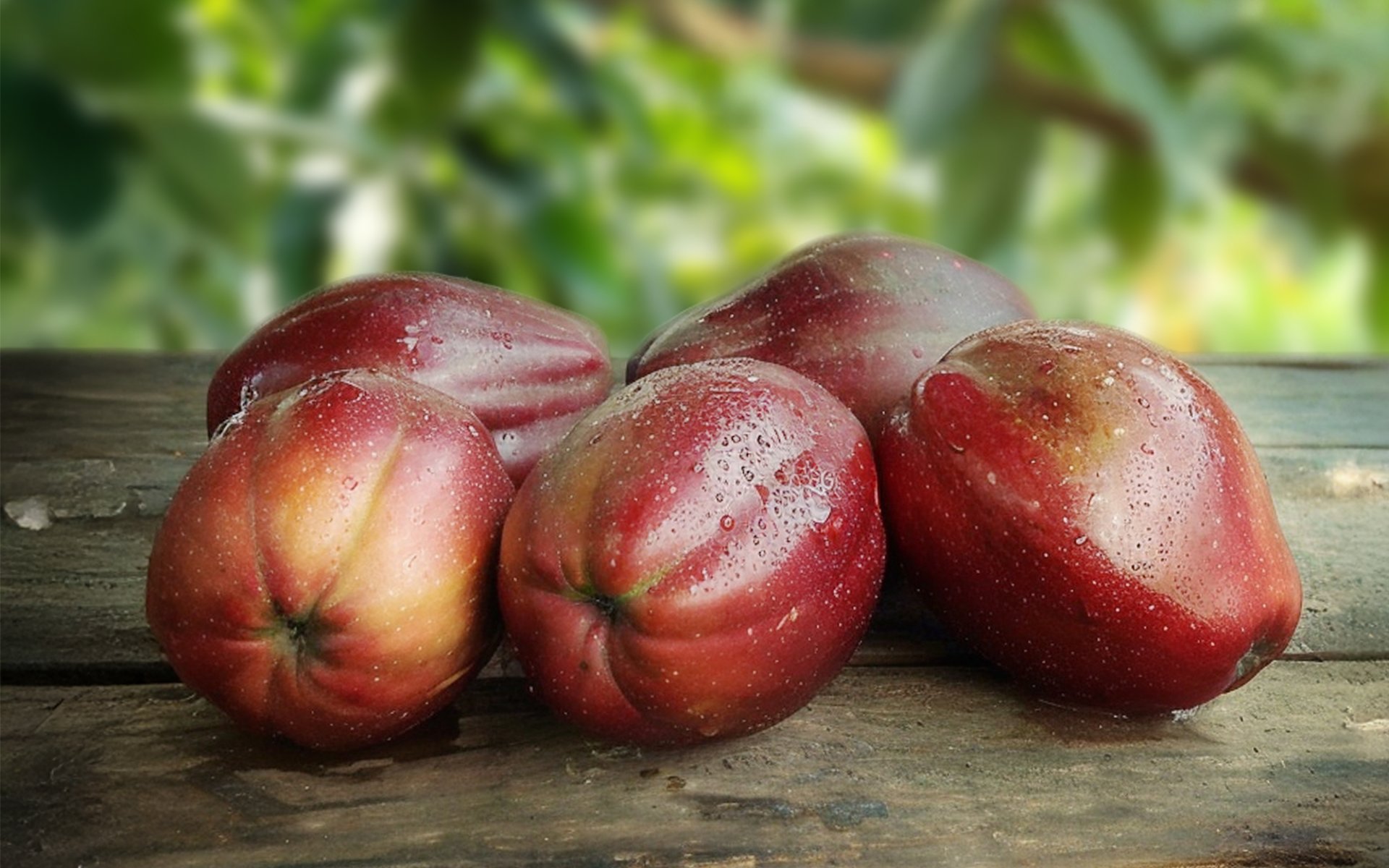Malay Apple

Discovering the Story of Malay Apple, a Native Fruit of Southeast Asia with a Global Journey
The Malay Apple, known in Thailand as Chompoo Ma-Miew or Red Rose Apple, is a tropical fruit native to the islands of Java and Sumatra in Southeast Asiaspanning Malaysia, Indonesia, and Southern Thailand. The ripe fruit features a deep red skin, a mildly sweet and tangy flavor, soft and juicy flesh, and a large central seed. Its shape can vary, with Thai varieties typically oval-shaped, while other regions may have bell or drop-shaped forms.
From Local Delight to Global Fruit
Scientifically named Syzygium malaccense, the fruit belongs to the Myrtaceae family. It is known by several names in English: Rose Apple, Mountain Apple, Otaheite Apple, or more commonly Malay Apple. In Malaysia, it is referred to as Jambu bol, meaning "red guava." In Thailand, the term Ma-Miew doesnt have a direct botanical meaning, but is believed to originate from the Chinese term 马六甲蒲桃 (Mǎliùjiǎpútáo), meaning rose apple of Malacca.
An Ancient Voyage Across Oceans
Malay Apple spread far beyond its native region thanks to early Austronesian navigators like the Lapita people, who traveled across the Pacific with domesticated plants, including this fruit. In 1793, Captain William Bligh of the British ship Providence brought the fruit from Tahiti to the Caribbean as part of a government initiative to introduce cheap, nutritious crops for enslaved laborers in Jamaica and Brazil. This marked its entry into the Western Hemisphere.
Tropical Adaptation and Cultural Integration
Malay Apple thrives in warm, humid environments like rainforests and lowland hillsides. It is valued not only for its fruit but also as a windbreak tree due to its dense foliage. The tree grows well in areas near water and can adapt to difficult soil conditions. Today, it can be found in natural settings throughout Bolivia, Colombia, Ecuador, the Galápagos Islands, and Hawaii.
In Thailand, Malay Apple is a seasonal fruit that grows from December to April. It was first cultivated commercially in Samut Songkhram province and is now widely grown across the country for its beauty, shade, and fruit. It is also considered a symbol of good fortune in Thai homes.
Nutritional Value and Culinary Uses
The fruit is eaten fresh, made into jams, or used to make fruit wines. When underripe, it is slightly sour and suitable for savory dishes like curries. Rich in vitamin C, vitamin A, calcium, phosphorus, and anthocyanins (natural antioxidants), Malay Apple is a health-promoting fruit that supports heart health, reduces cancer risks, and helps maintain strong bones and teeth.
Other parts of the tree are also used. The flowers stamen, with a tart flavor, is often used in Thai salads. The young shoots are eaten raw with chili pastes, while the roots serve medicinal purposes for treating fever, diarrhea, and skin conditions.
A Fruit That Connects Tradition with Modern Wellness
Malay Apple remains a beloved part of Southeast Asias agricultural and culinary heritage. Its vibrant color, distinctive flavor, and medicinal properties have kept it relevant through centuries. Whether as a fruit for snacking, a decorative tree, or a herbal remedy, this tropical gem continues to enrich lives in homes, gardens, and kitchens around the world.


